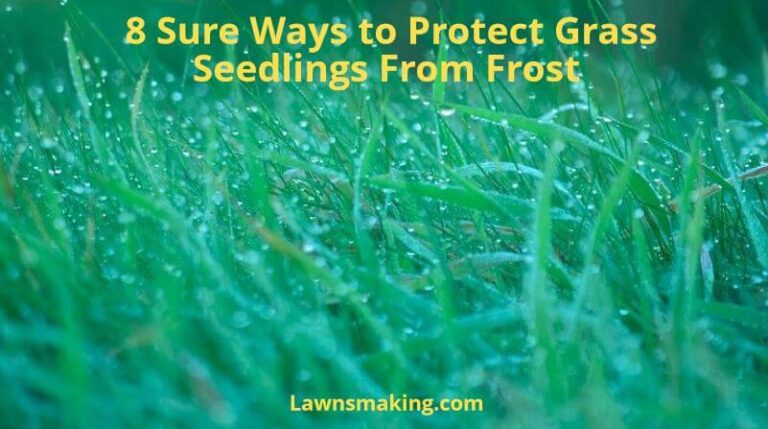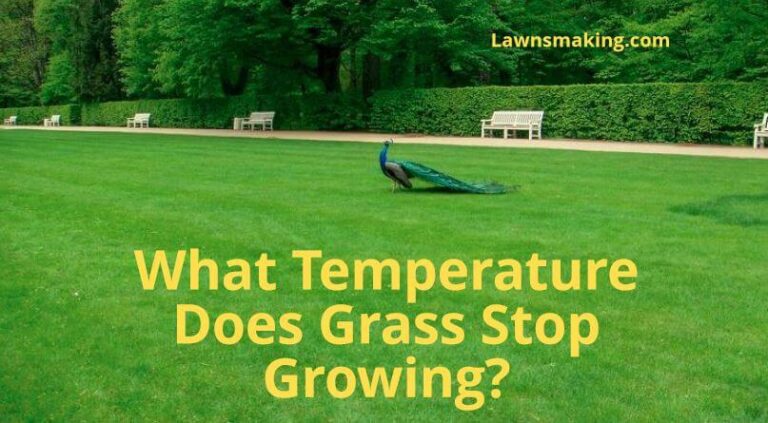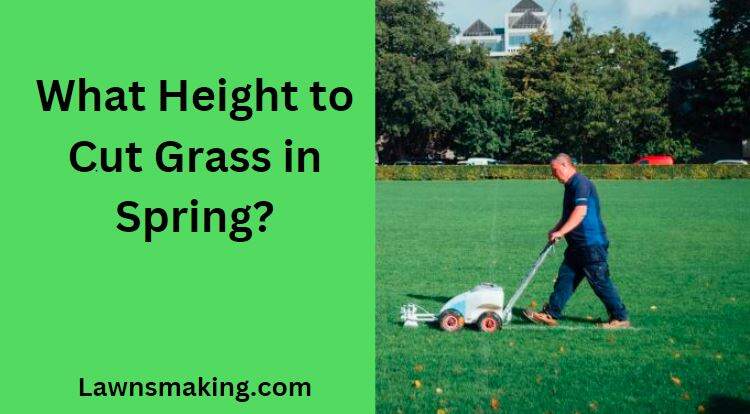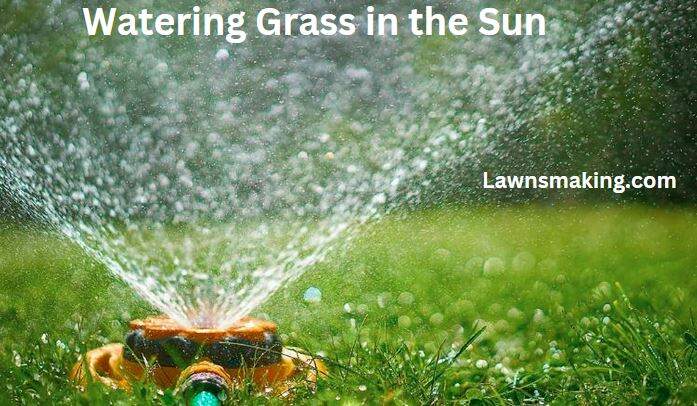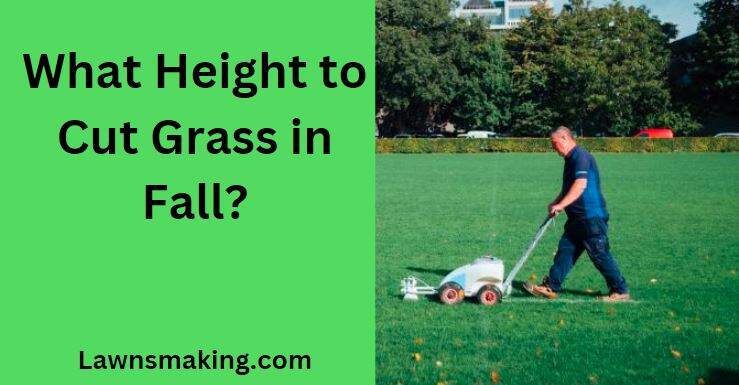
You’ve successfully manicured a healthy lawn through summer; now that fall is here, it’s time to prepare it for winter. One way of doing this is by adjusting the mowing height to reduce several potential problems going into winter dormancy. Many may then ask, what height should grass be cut in fall?
Grass should be cut 1⁄2 inch to 1 inch (1.27 to 2.54 cm) lower than the optimal height in fall. Warm-season grass should be cut ½ inch (1.27 cm), while cool-season grass should be an inch (2.54 cm) below the summer height. This translates to a mowing height of about 2.5 inches (6.35 cm) for cool-season turf and 1.5-2.0 inches (3.81-5.08 cm) for warm-season turf.
In the rest of this article, I’ll explain the intricacies of mowing in the fall: what height should grass be cut in fall, its benefits, and a few mowing tips to help your lawn survive the coming cold weather. Read on!
The Best Height for the Final Grass Cut in Fall

Fall has arrived, and grass growth is slowing down. You’ll want to wind down your mowing for the year and take a much-needed break from consistent lawn maintenance.
However, you’ll need to make your last mows count for your lawn to survive winter dormancy and return more robust than ever in the new year.
Experts recommend making your final cuts slightly shorter than average.
Here’s their argument.
During the summer (peak growing season), you cut the grass at the highest recommended height. The extra height benefits the plant in several ways, such as
- Insulating the plant’s roots from heat damage
- Inhibiting weed invasion
- Increasing photosynthesis
- Retaining soil moisture
- Strengthening the root system
But as fall rolls in, sunlight decreases, and grass growth slackens. The grass doesn’t require extra height anymore for health.
In fact, leaving your lawn too tall going into winter will make it susceptible to many winter health issues.
Precipitation (snow, ice, rain) will press down the long grass blades, causing mats. Matted grass will, in turn, trap moisture near the soil, making it a breeding ground for fungal diseases such as snow mold.
Also, the matted grass can harbor meadow mice (voles) which will destroy your lawn by leaving tunnels beneath the snow and feeding on your grass.
Mowing your lawn slightly shorter towards the end of fall will help prevent these issues come winter.
It will also promote early green-up in the spring because the short foliage will allow more sunlight to reach the ground, heating it quicker.
Conversely, mowing your lawn too short (scalping) in the fall can stress your grass during winter, leading to damage. The short foliage will struggle to produce enough energy by photosynthesis to withstand the cold or facilitate easy growth come spring.
Therefore, striking the right balance is vital to prevent permanent damage to your lawn in winter. It will also ensure a lush green and dense lawn the following season.
Also Read: What Height Should Grass Be Cut in Spring?
Ideal Fall Mowing Height: Cool-Season Grass vs. Warm-Season Grass
Lawn experts recommend the last 2-3 fall cuttings to be about ½ – 1 inch below the summer mowing height.
Consider cutting cool-season turf an inch shorter and warm-season turf ½ inch shorter than the summer cutting height.
More specifically, trim cool-season turf to about 2.5 inches and warm-season turf to 0.5-2.0 inches before the first frost occurs.
Here is a summary of the ideal fall mowing heights for common grass types.
| Grass Type | Summer Height (inches) | Final Fall Height (inches) |
| Tall and Fine fescues | 3-4 | 2-3 |
| Perennial ryegrass | 2.5-3.5 | 1.5-2.5 |
| Kentucky bluegrass | 2.5-3.5 | 1.5-2.5 |
| Centipede | 1-2 | 0.5-1.5 |
| St. Augustine | 2-3 | 1.5-2.5 |
| Bermuda | 1-2 | 0.5-1.5 |
| Zoysia | 2-3 | 1.5-2.5 |
How to Mow Your Lawn in the Fall
As mentioned, mowing in the fall should be aimed at preparing your lawn for winter. The plan is to leave your lawn as short as possible before the first winter frost without damaging it.
As such, don’t lower your cutting height instantly to the ideal fall height. This abrupt change will shock the grass, causing irreversible damage.
When transitioning from summer to the final fall height, gradually reduce your mower settings over several weeks. This will minimize stress on your lawn and allow it to get used to the new shorter height.
Consider stepping down your mowing height slightly each week so that you’re cutting ¼ – ⅓ of the grass blade. Do this until you attain your desired target height.
Once you reach your ideal height, continue mowing until the grass stops actively growing. That should be around November.
Conclusion
Are you still wondering what height grass should be cut in the fall? I bet not.
Mowing your lawn short in the fall is highly suggested to prevent winter damage and health issues.
On the other hand, cutting it too short will also cause so much stress on the plant.
The secret is trimming your lawn to about 2.5 inches, depending on your grass type. Again, the height reductions should be gradual to avoid stressing the grass.
And when the grass finally goes into dormancy, retire your mower and give it some end-of-year TLC.
